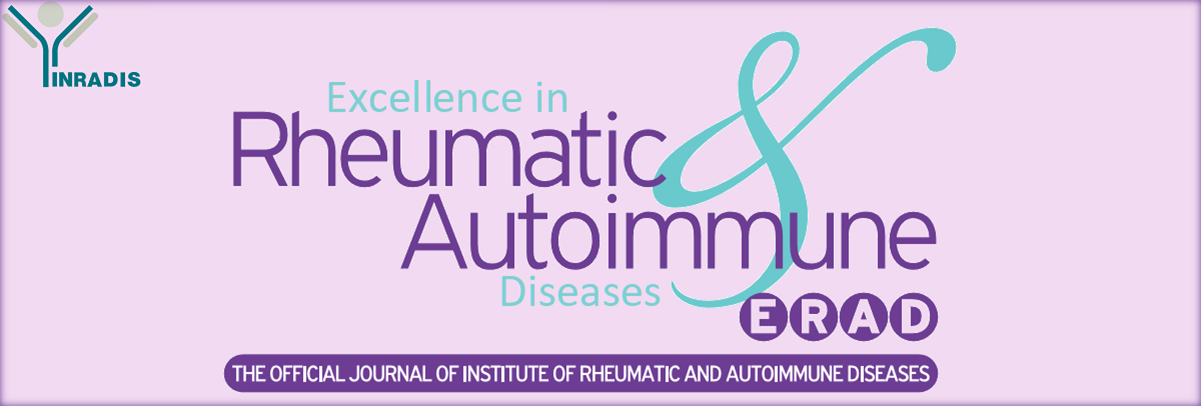


Expert Opinion
The position of autoantibodies in the diagnosis and classification of autoimmune diseases
Running title: autoantibodies in the diagnostic and classification criteria
Jan Damoiseaux
Laboratory Specialist Medical Immunology
Central Diagnostic Laboratory, Maastricht University Medical Center, Maastricht, The Netherlands
*Corresponding Author’s e-mail: jan.damoiseaux@mumc.nl
Abstract
Autoantibodies are important for the diagnosis and classification of autoimmune diseases. Currently, there is insufficient awareness that autoantibody assays are not standardized. We discuss the issues raised concerning the proper standardization of assays for autoantibody testing. The European Autoimmunity Standardisation Initiative (EASI) promotes the cross-talk between clinicians and laboratory specialists to improve the correct interpretation of autoantibody results.
(Submitted 13 July 2023; accepted 25 July 2023)
Keywords– assay, autoantibody, classification, criteria, EASI, testing
Introduction
Autoantibodies are increasingly recognized as important biomarkers in the diagnosis and classification of autoimmune diseases. Diagnostic criteria are defined to enable clinicians to correctly diagnose a patient based on clinical and laboratory characteristics, while classification criteria are defined to include patients with well-defined clinical and laboratory characteristics in studies. As a consequence, classification criteria are more stringent than diagnostic criteria. Studies with well-defined patient cohorts are not restricted to clinical trials for evaluation of new therapeutics, but also include mechanistic studies to unravel the pathophysiology of the respective disease. It is, however, questionable if classification criteria adequately take into account the heterogeneous nature of autoimmune diseases like systemic lupus erythematosus (SLE). According to the 1997 classification criteria of the American College of Rheumatology (ACR) SLE is classified if at least 4 out of 11 items are met. When considering that these criteria are independent from each other, there may be 330 distinct phenotypes that meet the SLE criteria [1].
Obviously, inclusion of all these phenotypes into a single pharmacological or pathophysiological study will impact a final conclusion. As such, it can also be questioned whether increasing the sensitivity of autoantibody assays will benefit our understanding of the respective disease since the association between autoantibody and disease subtype, like anti-dsDNA antibodies and lupus nephritis or anti-SSA/Ro60 antibodies and cutaneous variants of SLE, may be lost.
Besides the dilemma described above, there is insufficient awareness that autoantibody assays are not standardized [2]. In general, the committees involved in the establishment of disease criteria consist only of clinicians lacking experience with the pitfalls of autoantibody assays. This is illustrated by definitions for autoantibody criteria. They may include “at least equivalent performance” for solid phase assays compared to HEp-2 indirect immunofluorescence or “with demonstrated >90% specificity” for anti-dsDNA antibodies in the criteria for SLE. Equivalent has not been defined and this low threshold for specificity is really poor for a relatively rare disease. Also, a statement like “performed with a standardized and validated test” for anti-Jo1 antibodies in the criteria for idiopathic inflammatory myopathies (IIM) is difficult to achieve when considering that standard preparations for these antibodies are lacking. Another dilemma with respect to the position of autoantibodies in disease criteria involves the methodology to establish such criteria. The ACR and the European Alliance of Associations for Rheumatology (EULAR), extensively collaborating in the formulation of classification criteria for rheumatological diseases, follow a five-step strategy: enlisting potential items by experts, evaluation of these items in existing study cohorts, defining discriminating items and scoring system, applying the scoring system in a derivation cohort, and finally in a validation cohort. In particular the use of existing study cohorts hampers appropriate inclusion of autoantibodies: no distinction between SSA/Ro60 and Ro52 autoantibodies in the criteria of Sjögren’s syndrome, no inclusion of IIM-specific autoantibodies next to anti-Jo1 in the criteria of IIM, and the artificially high ranking of anti-RNA polymerase III antibodies in systemic sclerosis.
conclusion
The European Autoimmunity Standardisation Initiative (EASI) has been established to promote the cross-talk between clinicians and laboratory specialists
in order to improve the correct interpretation of autoantibody results. In the context of disease criteria, it is evident that EASI may also create more awareness in the community involved in disease criteria that there is lack of standardization of autoantibody assays [3]. Consequently, disease criteria that include autoantibodies may also benefit from the cross-talk between clinical and laboratory experts.
*This is an outline of a lecture given at the 5th Panhellenic Polythematic Congress of Autoimmune Diseases, Rheumatology and Clinical Immunology, 1-3 September 2023, Nafplia, Greece
author contribution
The Author drafted the manuscript and revised the manuscript. The Author approved the final version of the manuscript.
Conflict of interest
There is no conflict of interest.
References
1. Rekvig OP. SLE classification criteria : science-based icons or algorithmic distractions – an intellectually demanding dilemma. Front Immunol 2022;13:221-239.
2. Damoiseaux J. The perspective on standardisation and harmonisation : the viewpoint of the EASI president. Auto Immun Highlights 2020;11:1-7.
3. Damoiseaux J. Autoantibodies in the criteria of autoimmune diseases: is it sufficient to know that the test is positive? J Transl Autoimmun 2022;5:100144.
Τα cookies είναι σημαντικά για την εύρυθμη λειτουργία του ιστοτόπου και την βελτίωση της online εμπειρίας σας. Πατήστε "Αποδοχή" για να συνεχίσετε!ΑποδοχήΠερισσότερες πληροφορίες 

